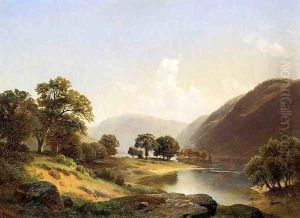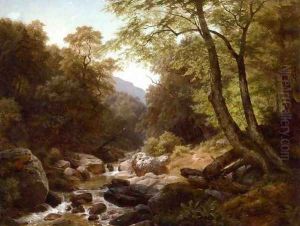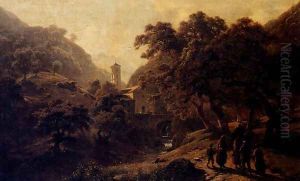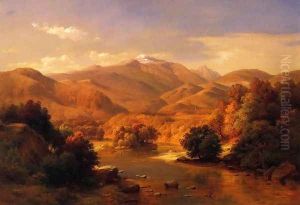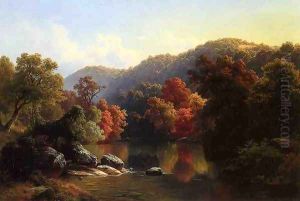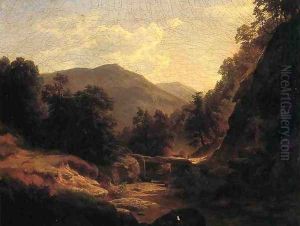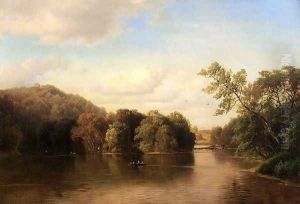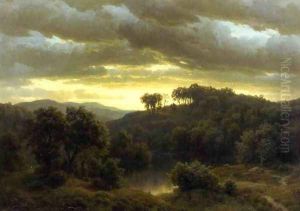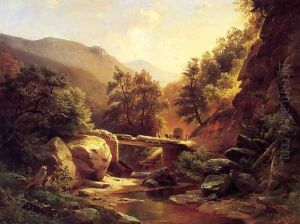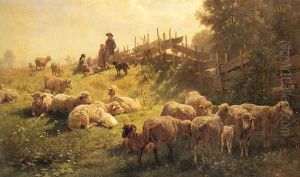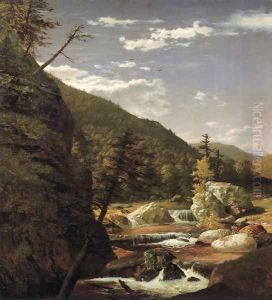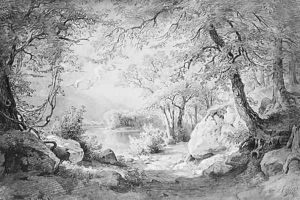Gottlieb Daniel Paul Weber Paintings
Gottlieb Daniel Paul Weber, born in 1823 in Darmstadt, Germany, was a notable 19th-century painter whose work primarily focused on landscapes. He moved to the United States in the mid-19th century, where he became an influential figure in the American art scene. Weber's early life in Germany provided him with a classical foundation in art, but it was his experience and observations in the American landscape that deeply influenced his artistic direction.
In America, Weber became associated with the Hudson River School, a group of artists known for their romantic and often idealized portrayals of the American wilderness. Although not a formal member, Weber's works shared the group's fascination with nature and its meticulous representation. He was particularly drawn to the landscapes of Pennsylvania, where he eventually settled, and his paintings often depict the serene and bucolic settings of this region.
Throughout his career, Weber exhibited his works in various prominent institutions, including the Pennsylvania Academy of the Fine Arts and the National Academy of Design in New York. His paintings were well-received, noted for their detailed realism, atmospheric effects, and the peacefulness they evoked.
Weber's influence extended beyond his own works. He was a respected teacher, imparting his knowledge and skills to a new generation of artists. Through his teaching and his art, Weber played a role in the development of American landscape painting in the late 19th century.
Gottlieb Daniel Paul Weber passed away in 1916, leaving behind a legacy that is preserved in the collections of several American museums. His contribution to the art world, particularly in the realm of landscape painting, is remembered for its celebration of the natural beauty of the United States and its technical mastery.
